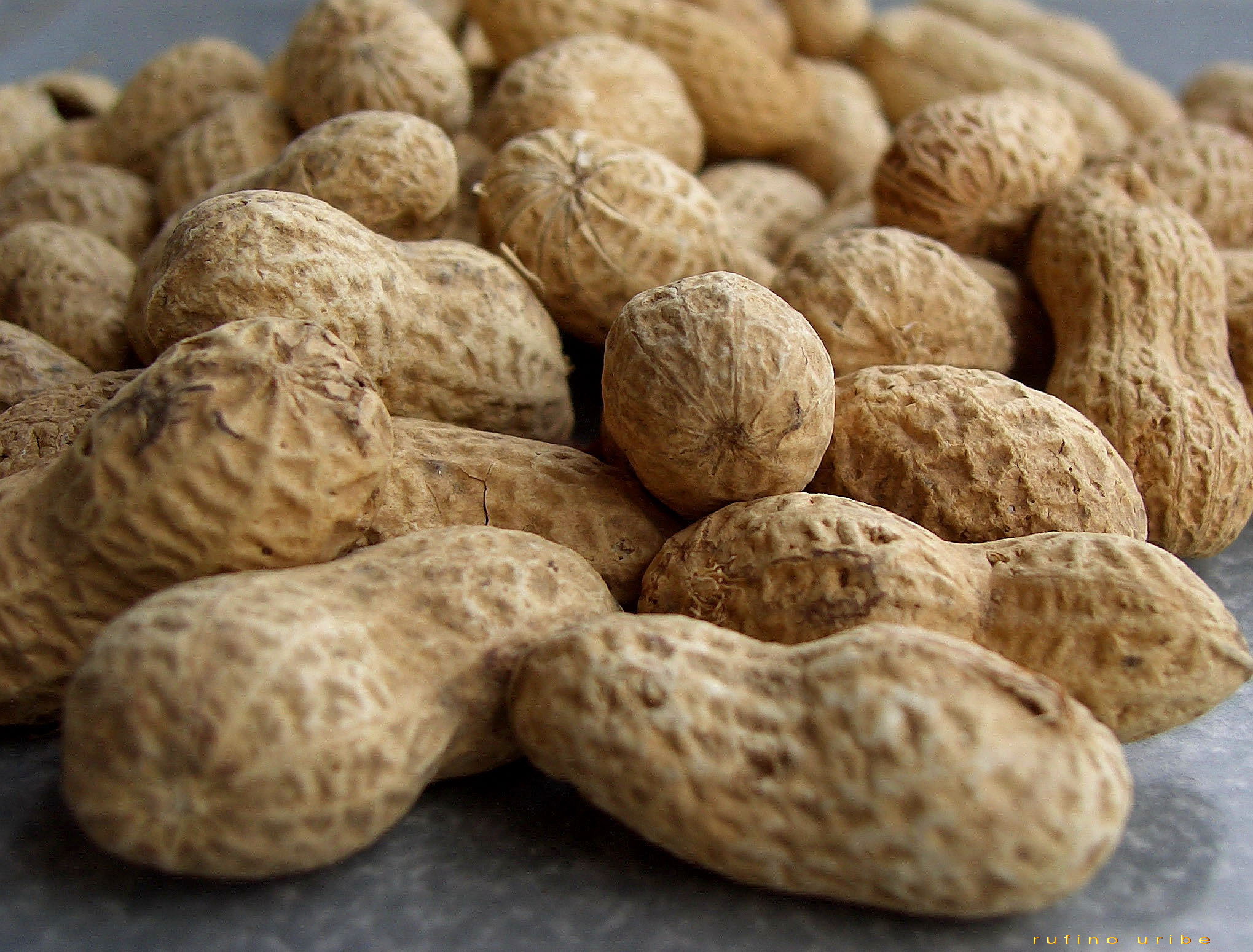Can you prevent a peanut allergy? Scientists found that introducing peanuts into the diet during infancy protected from allergic reactions well into adolescence.
Many foods are labeled as “made in a peanut-free facility” or “nut-free.” This is especially common in Western countries and in products being exported to these countries. Why are these labels important? Foods with these labels are deemed safe for those with peanut allergies.
A peanut allergy is one of the most common food allergies and its prevalence has grown 3.5 fold in the past twenty years. In individuals allergic to peanuts, a chance exposure to peanuts can cause a severe allergic reaction ending in the emergency room.
“Prevention is better than cure” is the commonly followed strategy in case of allergies. However, scientists now have clear evidence that directly facing the challenge early on might help prevent allergies to peanuts. A team of scientists across the US and UK, led by Dr. Gideon Lack of King’s College London, found that introducing peanuts during infancy in high-risk infants provides long-lasting peanut tolerance well into adolescence.
Peanut allergy: What do we know so far?
People may have different kinds of allergies. An allergic reaction occurs on exposure to an allergen. Some common allergens include milk, eggs, wheat, soy, peanuts, tree nuts, fish, seafood, pollen, and dust. Exposure to allergens can occur either through inhaling them, coming in contact with them, or eating anything with the allergen in it. Studies suggest that peanuts and tree nuts cause more severe reactions than other allergens.
At the molecular level, most allergic reactions are a case of a specific key fitting a specific lock. In this case, this fit or binding is between two proteins—the allergen and its specific antibody. An allergen is a protein found in the product that causes an allergic reaction. An antibody is also a protein, which is present in our bodies. Our bodies contain specific classes of antibodies. The specific class of antibodies involved in certain kinds of allergic reactions are IgE. IgE is present in immune cells. When an allergen interacts with its specific IgE molecule in the immune cells, these cells release chemicals that trigger an allergic reaction.
Learn more about the immune system in Cells Use mRNA to Fight Disease and Stress
Most plant-based allergens are proteins that are required for either storage, plant defense, or another role in the plant. There are 12 identified allergens in peanuts that could trigger an allergic response. The most common are Ara h1, h3, h2, and h6.
Typically, the diagnosis for a specific allergy begins with a medical history analysis and physical examination. This is primarily through testing for allergen-specific IgE antibodies, through a blood test or skin prick test, and also an oral food test to confirm the allergy. The current solutions to prevent a peanut allergy are to avoid peanuts in the diet and to have peanut allergen–specific immunotherapy. It is also important to recognize signs of allergy, use an EpiPen in case of a reaction, and take antihistamines to relieve the symptoms of allergies.
Origins of a multiyear peanut allergy study
Researchers have observed that in countries where peanuts are introduced early into the diet, there is reduced prevalence of peanut allergy. Following this observation, Dr. Lack’s research team set up the LEAP (Learning Early About Peanut allergy) study in 2006, in which high-risk infants were either introduced to peanuts early in their diet or peanuts were completely avoided from their diet. The researchers then compared the incidence of peanut allergy in both groups. This study showed that introducing peanuts in the diet of high-risk infants from infancy reduced the prevalence of peanut allergy.
Learn more about peanuts in the diet with Fabulous Fat: Lipid-Based Nutrient Supplements Combat Malnutrition
The LEAP-On study was a follow-on study to LEAP and showed that children whose diet included peanuts in the LEAP study continued to be protected against developing peanut allergy a year after avoiding peanuts in their diet.
The current study, called the LEAP-Trio cohort study, is an extension of the previous LEAP and LEAP-On studies. Here, researchers followed the impact of introducing peanuts from an early age up to age 12, when consumed in the amount and frequency chosen by the participant. They found that early introduction to peanuts protects participants against peanut allergy up to adolescence.
Updated findings on peanut allergic reactions
The three cohorts in LEAP-Trio included participants of the original LEAP study, their siblings, and their parents. Starting in 2018, data collection continued until 2022. The participants completed general medical, dietary, allergy, and other assessments. These included a blood test and skin prick test. The original LEAP study had 640 participants, of which 508 enrolled in this study.
The researchers found that those participants who were introduced to peanuts during infancy (LEAP study) were able to avoid peanut allergy at age 12 as compared to those who avoided peanuts during the LEAP study. However, participants in both the peanut-exposure and peanut-avoidance groups reported avoiding peanuts for prolonged periods of time between age 6 and 12 years.
Higher levels of peanut-specific, Ara h2–specific IgE were found in the peanut-avoidance group as compared to the peanut-exposed group. In contrast, these participants had lower levels of the peanut-specific IgG4, another kind of antibody produced by our body that competes with IgE to bind to immune cells and might prevent allergic reactions.
This implies that introducing peanuts in the diet of high-risk infants early provides prolonged tolerance to peanut allergy. Moreover, avoiding peanuts for prolonged periods after this initial introduction of peanuts did not appear to impact the acquired tolerance. This study shows that prolonged tolerance to peanut allergy can be built by introducing peanuts into the diet during infancy.
This research article was published in the peer-reviewed journal NEJM Evidence.
The information contained in this article is for educational and informational purposes only and is not intended as health or medical advice. Always consult a physician or other qualified health provider regarding any questions you may have about a medical condition or health objectives.
References
Al-Muhsen, S., Clarke, A. E., & Kagan, R. S. (2003). Peanut allergy: an overview. Canadian Medical Association Journal, 168(10), 1279–1285.
Du Toit, G., Huffaker, M. F., Radulovic, S., Feeney, M., Fisher, H. R., Byron, M., … & Lack, G. (2024). Follow-up to adolescence after early peanut introduction for allergy prevention. NEJM Evidence, 3(6), EVIDoa2300311. https://doi.org/10.1056/EVIDoa2300311
Du Toit, G., Roberts, G., Sayre, P. H., Bahnson, H. T., Radulovic, S., Santos, A. F., … & Lack, G. (2015). Randomized trial of peanut consumption in infants at risk for peanut allergy. New England Journal of Medicine, 372(9), 803–813. https://doi.org/10.1056/NEJMoa1414850
Foti Randazzese, S., Panasiti, I., Caminiti, L., Catamerò, F., Landi, M., De Filippo, M., … & Barberi, S. (2024). Current state and advances in desensitization for peanut allergy in pediatric age. Pediatric Allergy and Immunology, 35(4), e14127. https://doi.org/10.1111/pai.14127
Lange, L., Klimek, L., Beyer, K., Blümchen, K., Novak, N., Hamelmann, E., … & Vogelberg, C. (2021). White paper on peanut allergy – part 1: Epidemiology, burden of disease, health economic aspects. Allergo Journal International, 30, 261–269. https://doi.org/10.1007/s40629-021-00189-z
Maslinska, M., Dmowska-Chalaba, J., & Jakubaszek, M. (2022). The role of IgG4 in autoimmunity and rheumatic diseases. Frontiers in Immunology, 12, 787422. https://doi.org/10.3389/fimmu.2021.787422
Mekori, Y. A. (1996). Introduction to allergic diseases. Critical Reviews in Food Science and Nutrition, 36(suppl), S1–S18. https://doi.org/10.1080/10408399609527756
Mueller, G. A., Maleki, S. J., & Pedersen, L. C. (2014). The molecular basis of peanut allergy. Current Allergy and Asthma Reports, 14, 429. https://doi.org/10.1007/s11882-014-0429-5
Tirumalasetty, J., Barshow, S., Kost, L., Morales, L., Sharma, R., Lazarte, C., & Nadeau, K. C. (2023). Peanut allergy: risk factors, immune mechanisms, and best practices for oral immunotherapy success. Expert Review of Clinical Immunology, 19(7), 785–795. https://doi.org/10.1080/1744666X.2023.2209318
Featured image “a granel” by ruurmo, licensed under CC BY-SA 2.0.

About the Author
Vaishnavi Sridhar completed a PhD in Cell and Developmental Biology from the University of British Columbia, Canada. Currently she works as Manager, Academic Collaborations and Events at the National Centre for Biological Sciences, Canada. She loves discussing science, taking nature walks, and cooking in her free time. Follow Vaishnavi on LinkedIn or X (formerly Twitter) @VaishnaviSrid10.




